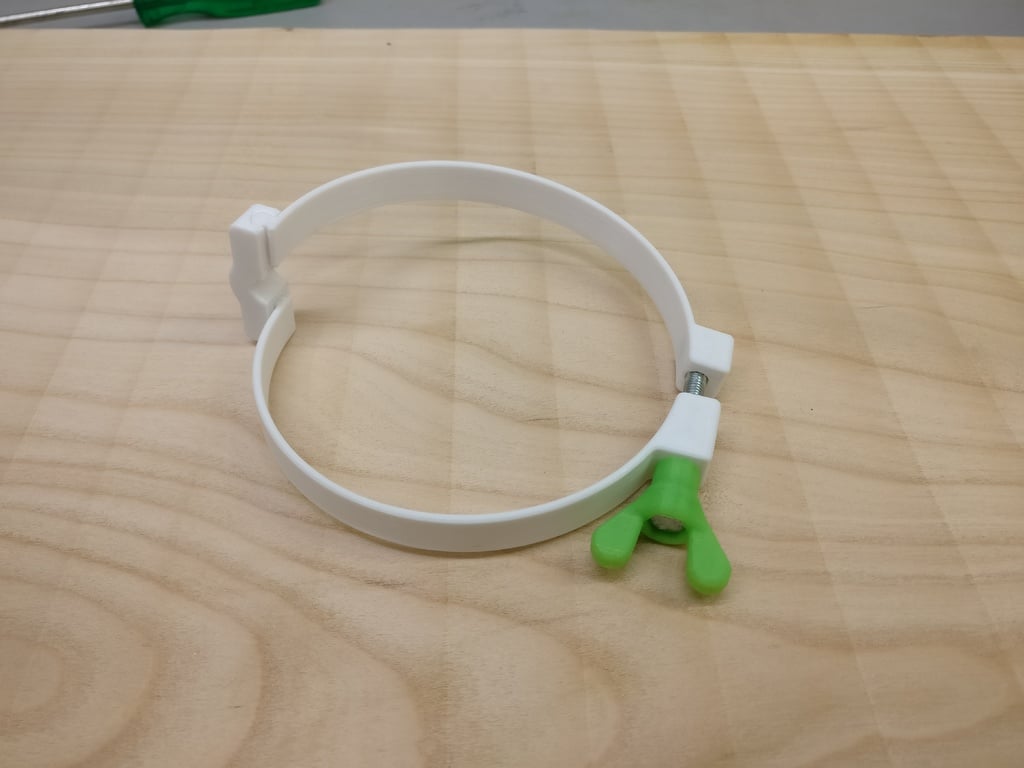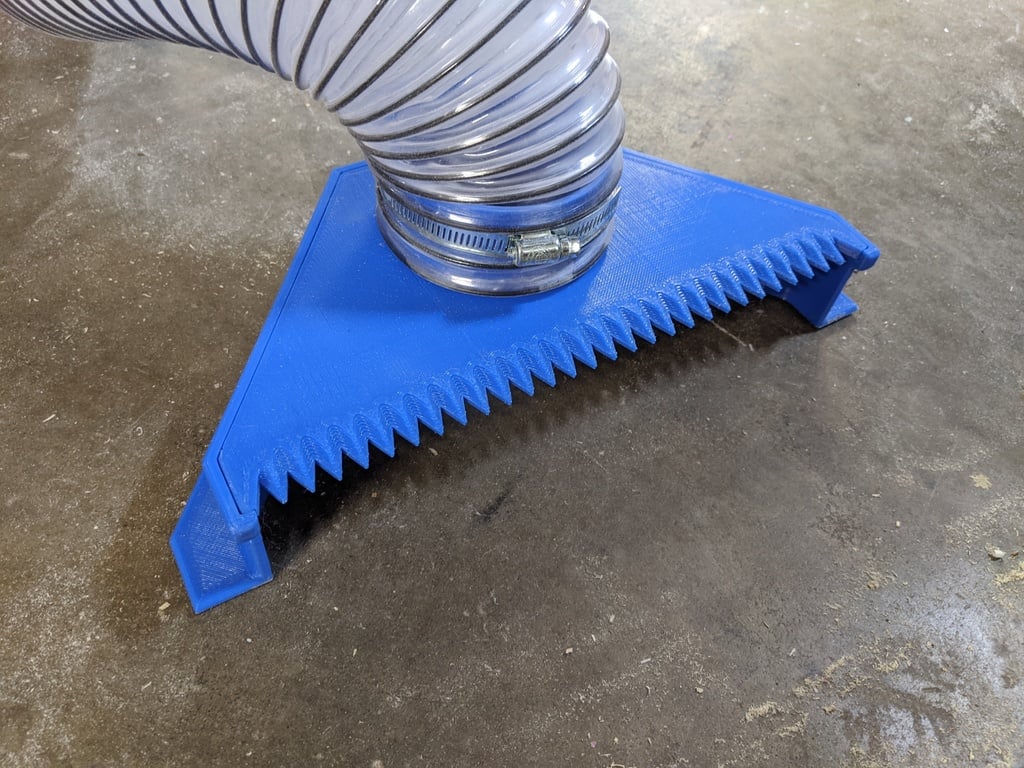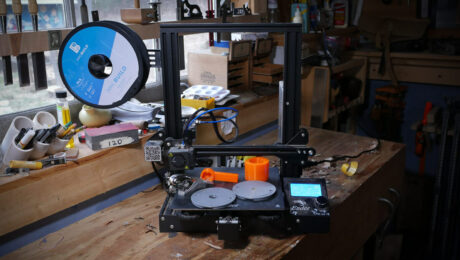After getting my 3d printer, one of the first things I modeled and printed was a very basic vacuum hose adapter. Something simple that allowed the end of my smaller dust extractor hose to easily and securely fit into the larger fittings on tools designed to work with a shop-vac-style hose. In short order, I printed half a dozen of them so I could leave them on the tools and move the same hose from machine to machine. I think dust collection fittings alone justify the cost of an inexpensive 3d printer. Today I’d like to share some of my favorites that I have either printed or want to print. If you have some of your own I’d love to see them in the comments below!
Possibly the perfect bandsaw dust collection shroud

I don’t have an actual dust collector. For years now, dust collection in my shop has been a Festool CT36 and a long hose. Recently I added a second dust extractor that is dedicated to my disc sander and bandsaw. Since I am limited to low-volume high-pressure dust collectors, I am a fan of trying to grab dust right at the source. On a bandsaw, I can’t imagine a better way of doing that than this shroud by Thingiverse user Bob 32. It gets the vacuum suction directly underneath the cut where the dust is actually being made. In my experience, it works as well—if not better than—a large dust collector and a 4-inch line.
A better hose clamp for flexible ducting

I desperately need to print a few of these for the Fine Woodworking shop. Our dust collection is primarily 4-inch flexible duct and I have not had good luck with regular hose clamps keeping the ducting attached to some of the machines. The problem is that a hose clamp can’t compress the metal reinforcement wire in the flexible hose, keeping you from being able to fully tighten it around the fitting. YouTuber Marius Hornberger created this printable hose clamp that jumps over the reinforcement wire and allows the flexible part of the hose to actually tighten around the fitting. Marius’s video on 3d printing is likely what finally pushed me off the fence and buying my first 3d printer.
Drill press dust collection where you need it

Speaking of Marius, he created a large “Loc-Line” style segmented ducting that can move any which way and stay where you put it. I have purchased a 2 1/2-inch version from Loc-Line but found that the large inlet funnel sent by Loc-Line and in Marius’s video is not ideal for most uses since it doesn’t focus the suction where you need it. Thingiverse user, Lazershrimp created this flat funnel version that is very intriguing.
Here is a similar take that clamps onto a tabletop by Thingiverse user Komitadjie.
Floor sweep for the optimistic

Another thing I need to add to the FW shop. Some people down there have a bad habit of sweeping the dust on the floor into large piles and then never picking up the piles. Me… I’m the one who does that. Maybe if there was an easy place to sweep everything where it will be magically sucked into the dust collector I might just have a chance. One aspect of this model like is that the creator, DuncanJB, took the time to add a “comb” to the top to make it easier to get that weird hand plane shaving unstuck from the broom.
With a parametric dust port adapter it’s exactly the adapter you needed
 The last model I want to share is likely the most important. So many models shared online are incredibly specific to a tool. That’s the beauty of 3d printing, you’re not limited to a generic adapter that works on many tools. Harmo_hammer created a parametric model where you can just input the sizes you need and the model is automatically updated. Send it to your printer and walk away. Unlike the other models I’ve shared, this one requires using Fusion 360 to change the parameters of the model, but it’s well worth the hassle of downloading the free personal-use version and messing around with it.
The last model I want to share is likely the most important. So many models shared online are incredibly specific to a tool. That’s the beauty of 3d printing, you’re not limited to a generic adapter that works on many tools. Harmo_hammer created a parametric model where you can just input the sizes you need and the model is automatically updated. Send it to your printer and walk away. Unlike the other models I’ve shared, this one requires using Fusion 360 to change the parameters of the model, but it’s well worth the hassle of downloading the free personal-use version and messing around with it.
Sign up for eletters today and get the latest techniques and how-to from Fine Woodworking, plus special offers.


